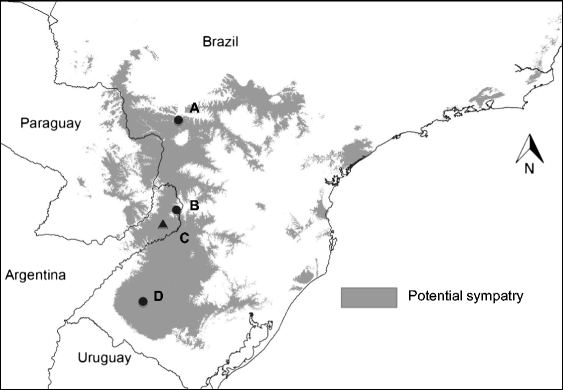The authors use MaxEnt to model the distribution of two species of howlers (Alouatta caraya and Alouatta guariba clamitans). The data was collected from four sources: museum species from GBIF, publications, unpublished records, and field survey from 3/2008 to 11/2009. The full set of bioclimatic variables consisted of 19 variables. The model for Alouatta caraya used 196 presence points and 8 of the 19 climatic variables. The model for A. guariba clamitans used 74 presence points and 13 climatic variables.
 Habitat suitability (low, moderate, high) categorized the resulted of the predicted areas. In addition, the models were evaluated using AUC. Both the models provided a wider distribution than currently estimated. The results of the model for Alouatta caraya had a broader range and a variety of temperatures with Temperature Annual Range as the most influential to the distribution.
Habitat suitability (low, moderate, high) categorized the resulted of the predicted areas. In addition, the models were evaluated using AUC. Both the models provided a wider distribution than currently estimated. The results of the model for Alouatta caraya had a broader range and a variety of temperatures with Temperature Annual Range as the most influential to the distribution.

For A. guariba clamitans the species was more contrained to rainy areas of the forest with high altitudes and low minimum temperatures. This species was most influenced by Mean Temperature of the Coldest Quarter.

There was also a region of overlap between the species which suggests (as positioned by the authors) a difference in foundational niches of the species. This overlap could result in hybridization potentially limiting the overlap. In addition, the authors posit that the overlap zone could be maintained by the Parana River.
Holzmann, I., Agostini, I., DeMatteo, K., Areta, J. I., Merino, M. L. & Di Bitetti, M. S. 2015 Using species distribution modeling to assess factors that determine the distribution of two parapatric howlers (Alouatta spp.) in South America. Int. J. Primatol. 36, 18–32.

